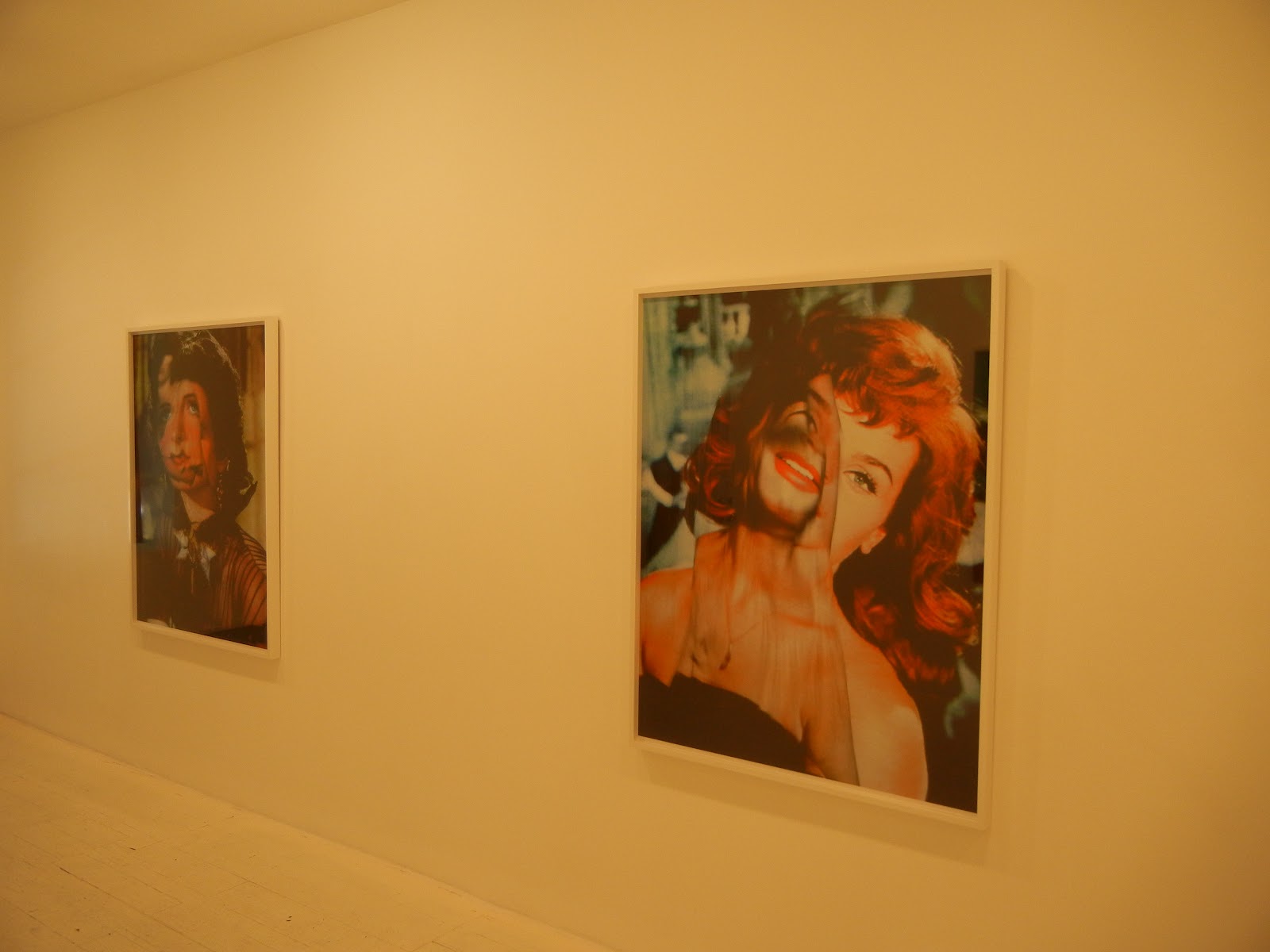 JTF (just the facts): A total of 7 color works, hung in the upper viewing area in the back of the gallery. 5 of the works are archival pigment prints, framed in brown wood, from 2012. These prints are sized 28x20, and are available in editions of 7+2AP. The other 2 works are archival pigment prints mounted to Dibond and Plexiglas, unframed, also from 2012. These works are sized 59x41, and are available in editions of 5+2AP. (Installation shots at right.)
JTF (just the facts): A total of 7 color works, hung in the upper viewing area in the back of the gallery. 5 of the works are archival pigment prints, framed in brown wood, from 2012. These prints are sized 28x20, and are available in editions of 7+2AP. The other 2 works are archival pigment prints mounted to Dibond and Plexiglas, unframed, also from 2012. These works are sized 59x41, and are available in editions of 5+2AP. (Installation shots at right.)Comments/Context: Ruud van Empel's small show provides two new bodies of work to contemplate, both in his now-signature style of flawlessly stitched together, composite imagery. At this point, van Empel's digital collages of meticulously rendered but somehow surreal children are immediately identifiable, and these new projects don't stray too far from his proven visual formula.
 Most of the images in the exhibit substitute a backdrop of manicured, formal gardens for the lush jungle vegetation the artist has regularly employed as a setting. But there is something over-the-top and manic about these manufactured gardens filled with endless topiaries, pruned evergreens, boxwood hedges and shrubbery specimens. Kids primly stand in their Sunday best (thus the title of the series), freckly red haired boys in proper coats and ties, and black children in snappy blazers and bow ties or sweater dresses and mary janes. As they pose on the gravel paths, with a stray peacock or dove nearby, the gardens engulf and overtake them, controlled nature on the verge of out of control. For the first time, van Empel has also introduced an older lady as a subject, seen up close, in a fur collared coat. The background of her portrait explodes with angular, geometric forms in green, with a nod to the Renaissance, but inexplicably dense and layered.
Most of the images in the exhibit substitute a backdrop of manicured, formal gardens for the lush jungle vegetation the artist has regularly employed as a setting. But there is something over-the-top and manic about these manufactured gardens filled with endless topiaries, pruned evergreens, boxwood hedges and shrubbery specimens. Kids primly stand in their Sunday best (thus the title of the series), freckly red haired boys in proper coats and ties, and black children in snappy blazers and bow ties or sweater dresses and mary janes. As they pose on the gravel paths, with a stray peacock or dove nearby, the gardens engulf and overtake them, controlled nature on the verge of out of control. For the first time, van Empel has also introduced an older lady as a subject, seen up close, in a fur collared coat. The background of her portrait explodes with angular, geometric forms in green, with a nod to the Renaissance, but inexplicably dense and layered.
The other two images on view play with linear perspective in new ways. A crowd of kids of varying sizes (and varying outfits) is arrayed against a formless grey background, seemingly following the rules of aerial depth perception but floating unrooted to any landscape. Shadows are cast by the children (so there is a consistent light source), but otherwise they have no connection to a setting or narrative. The works almost seem like a temporary peg board resting place for van Empel's fancy fabricated kids, as though he was simply waiting to insert them into some other elaborate scene but they have been stranded in this endless netherworld in the meantime. While the colors are bright and energetic, the works felt oddly dispiriting, like the well-meaning kids were trapped in some kind of cleaned-up stylish hell.
Part of what I like about van Empel's work is this sense of discomfort that grows as you look as his photographs. The first glance always seems placid and inviting, but a closer examination always seems to uncover an undercurrent of the threatening, the puzzling, or the unsettlingly mismatched. It's a hyper-perfect world, where the fastidious, glossy detail is often slightly disturbing.
 Collector's POV: The works in this show are priced as follows. The smaller 28x20 prints are $24000 and the larger 59x41 prints are $32000. Van Empel's prints have become more consistently available in the secondary markets in recent years. Prices at auction have ranged between roughly $15000 and $120000.
Collector's POV: The works in this show are priced as follows. The smaller 28x20 prints are $24000 and the larger 59x41 prints are $32000. Van Empel's prints have become more consistently available in the secondary markets in recent years. Prices at auction have ranged between roughly $15000 and $120000.
Rating: * (one star) GOOD (rating system described here)
Transit Hub:
Ruud van Empel, Sunday
Through October 20th
530 West 25th Street
New York, NY 10001


































